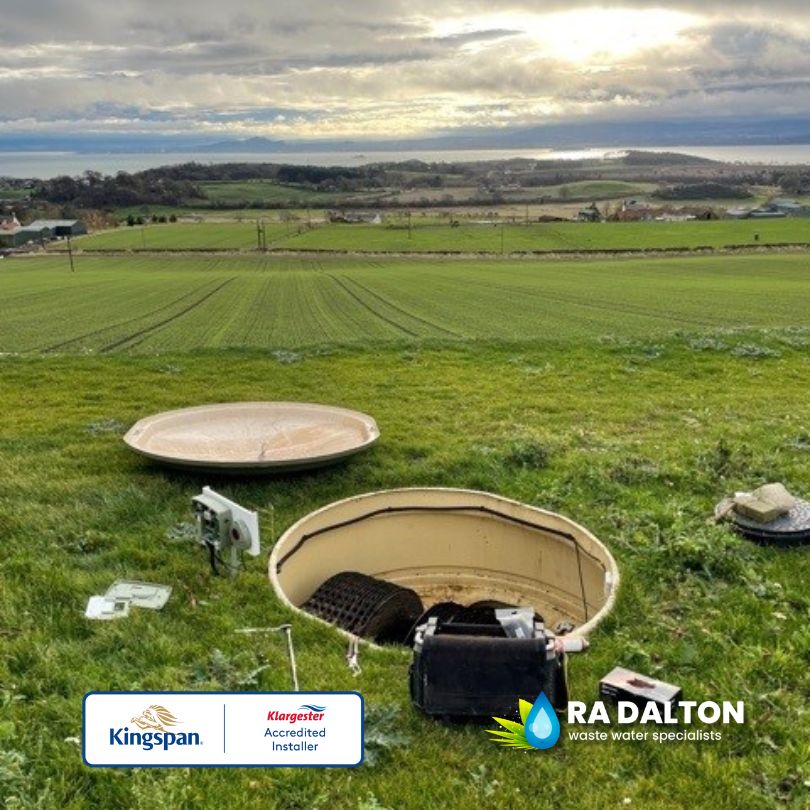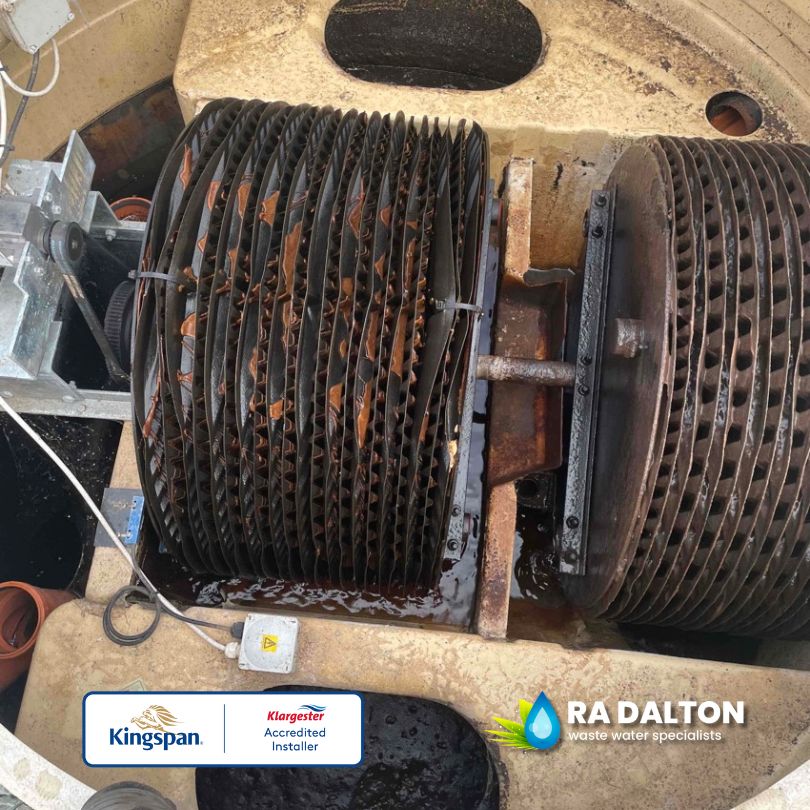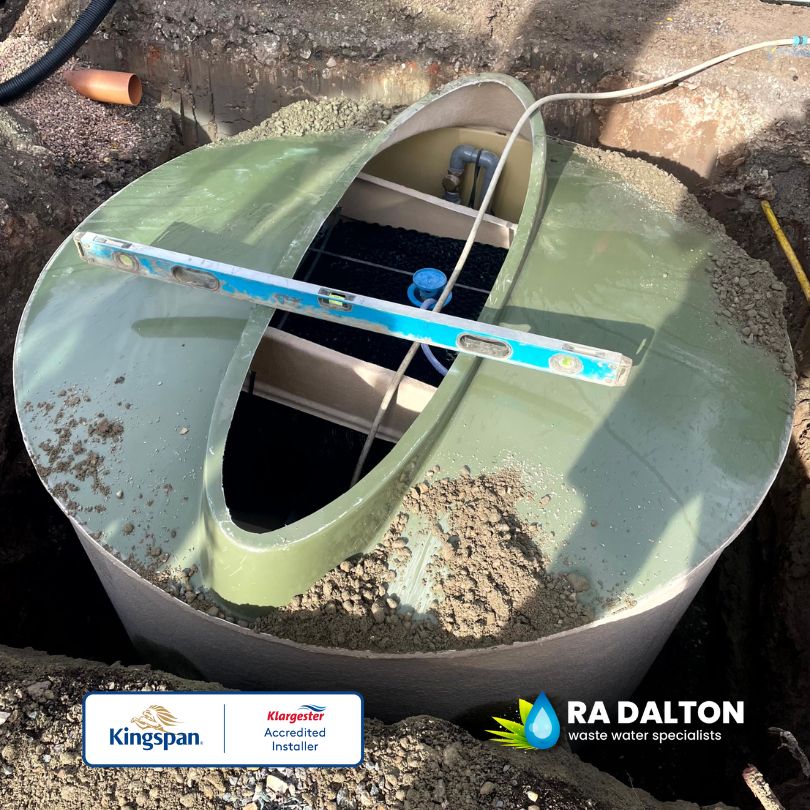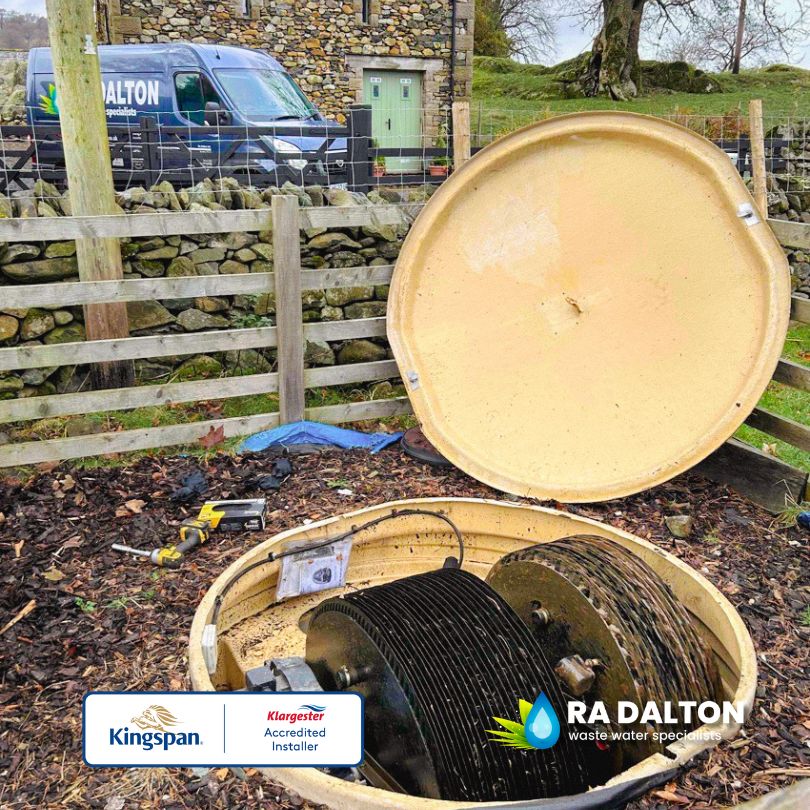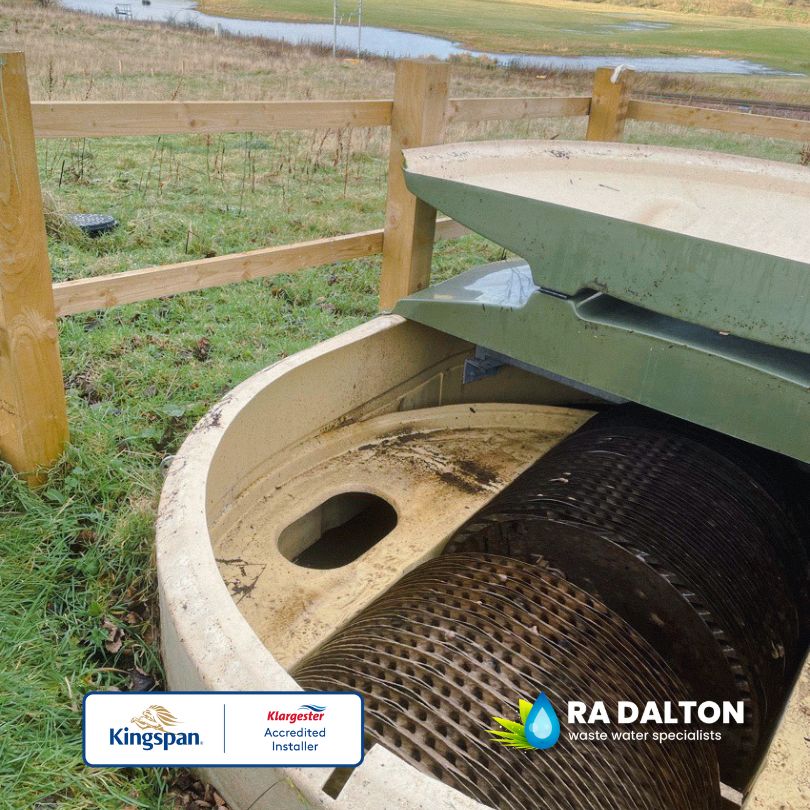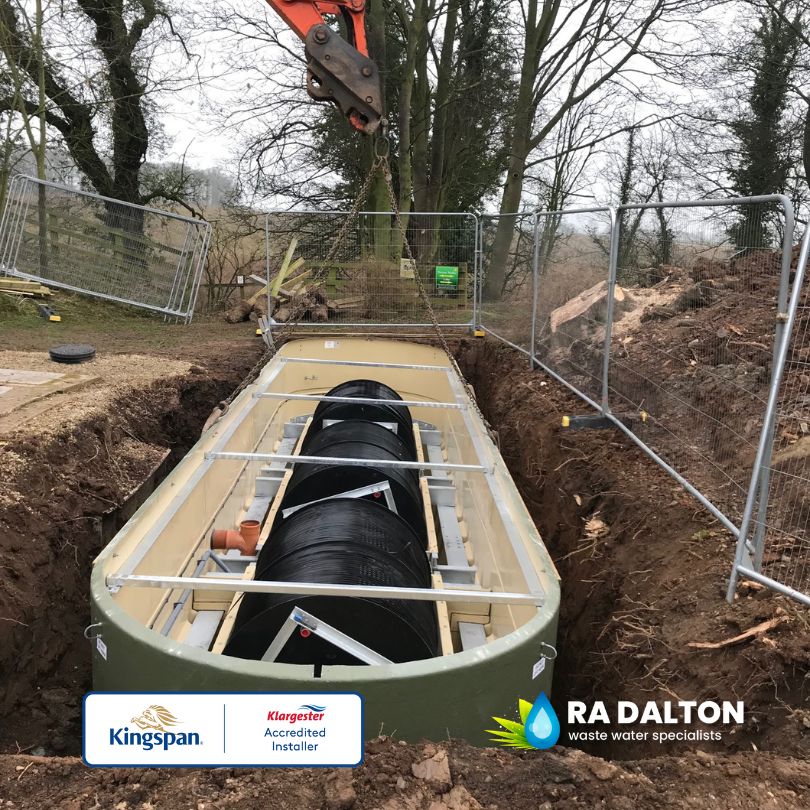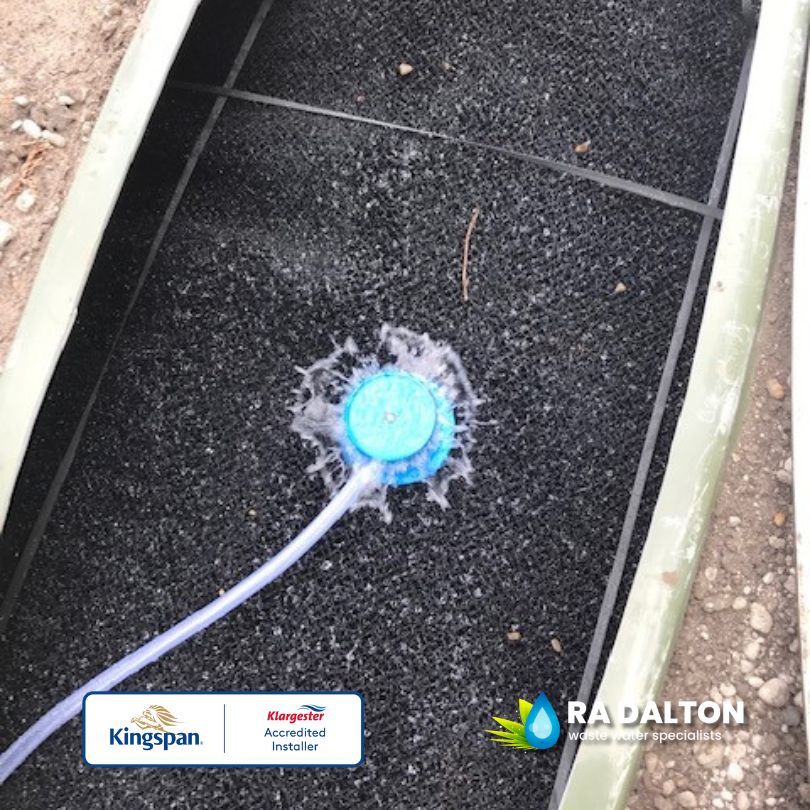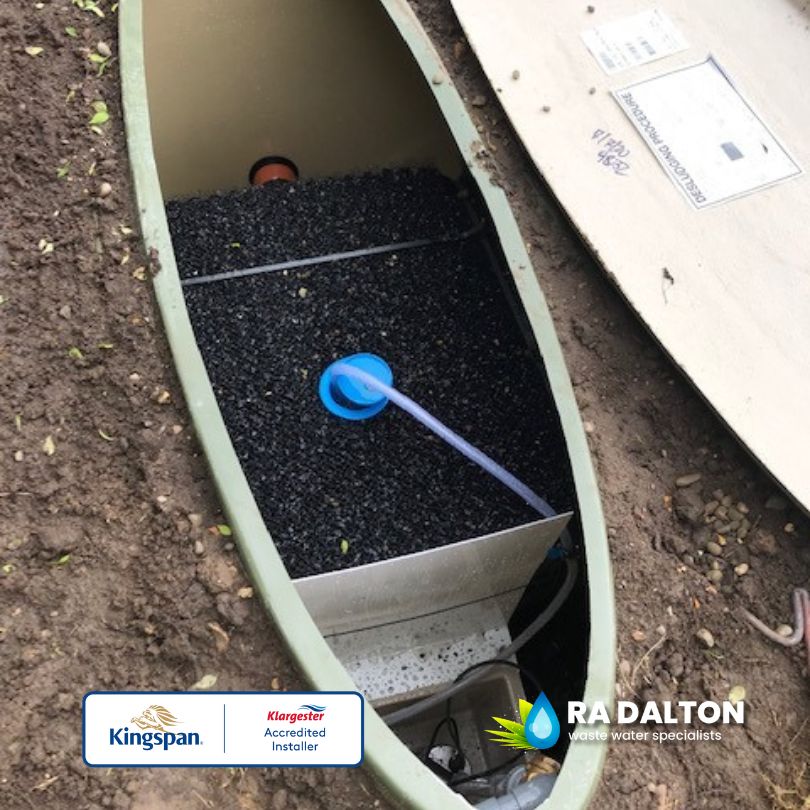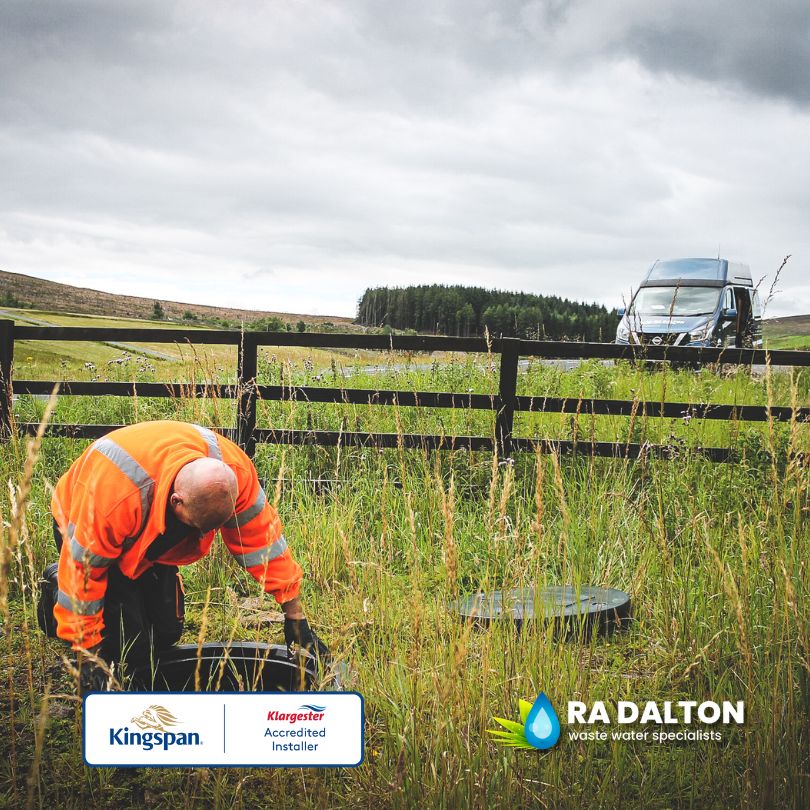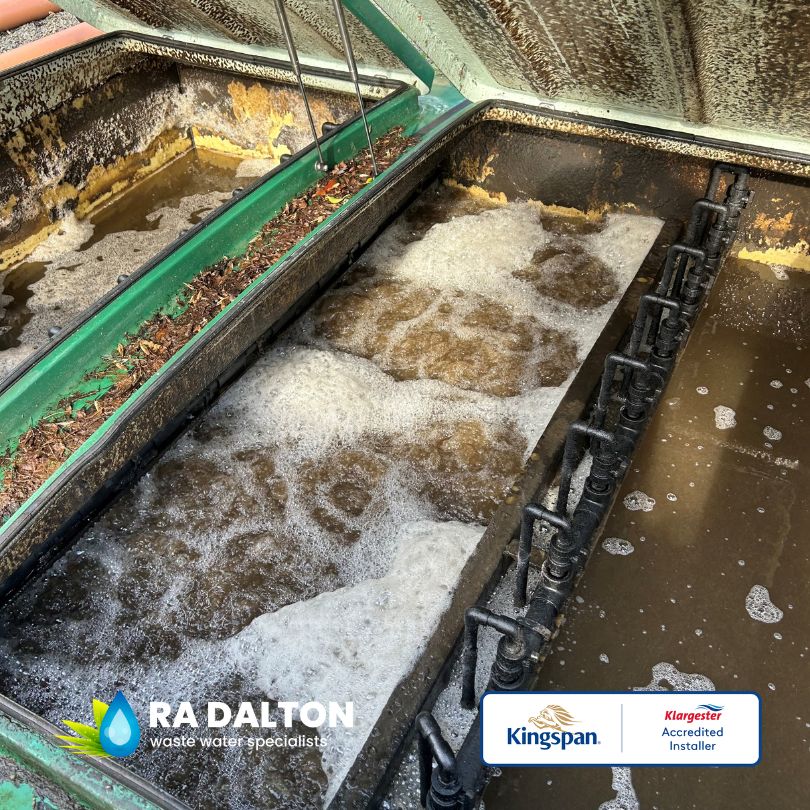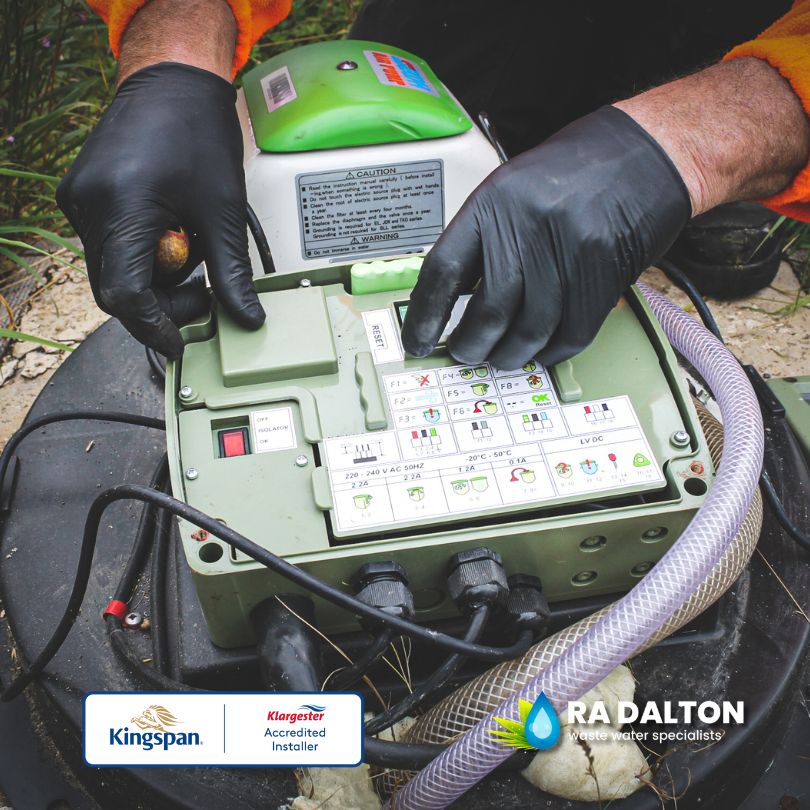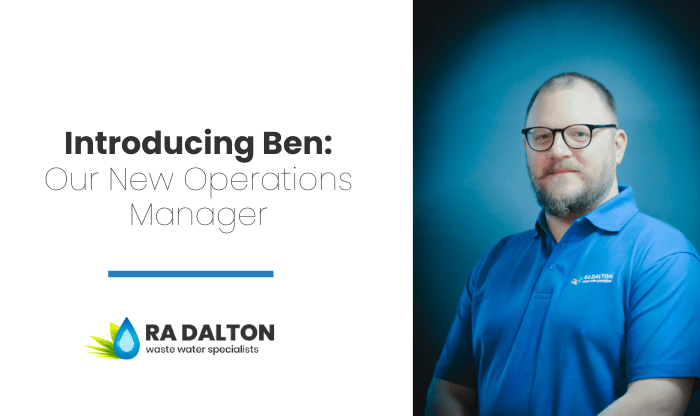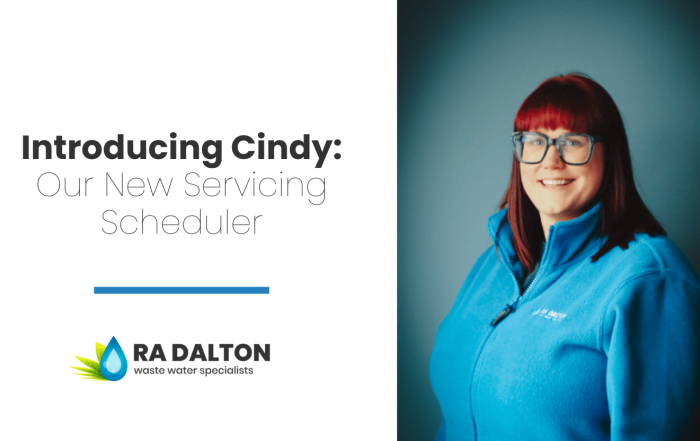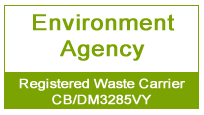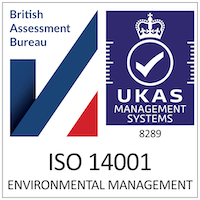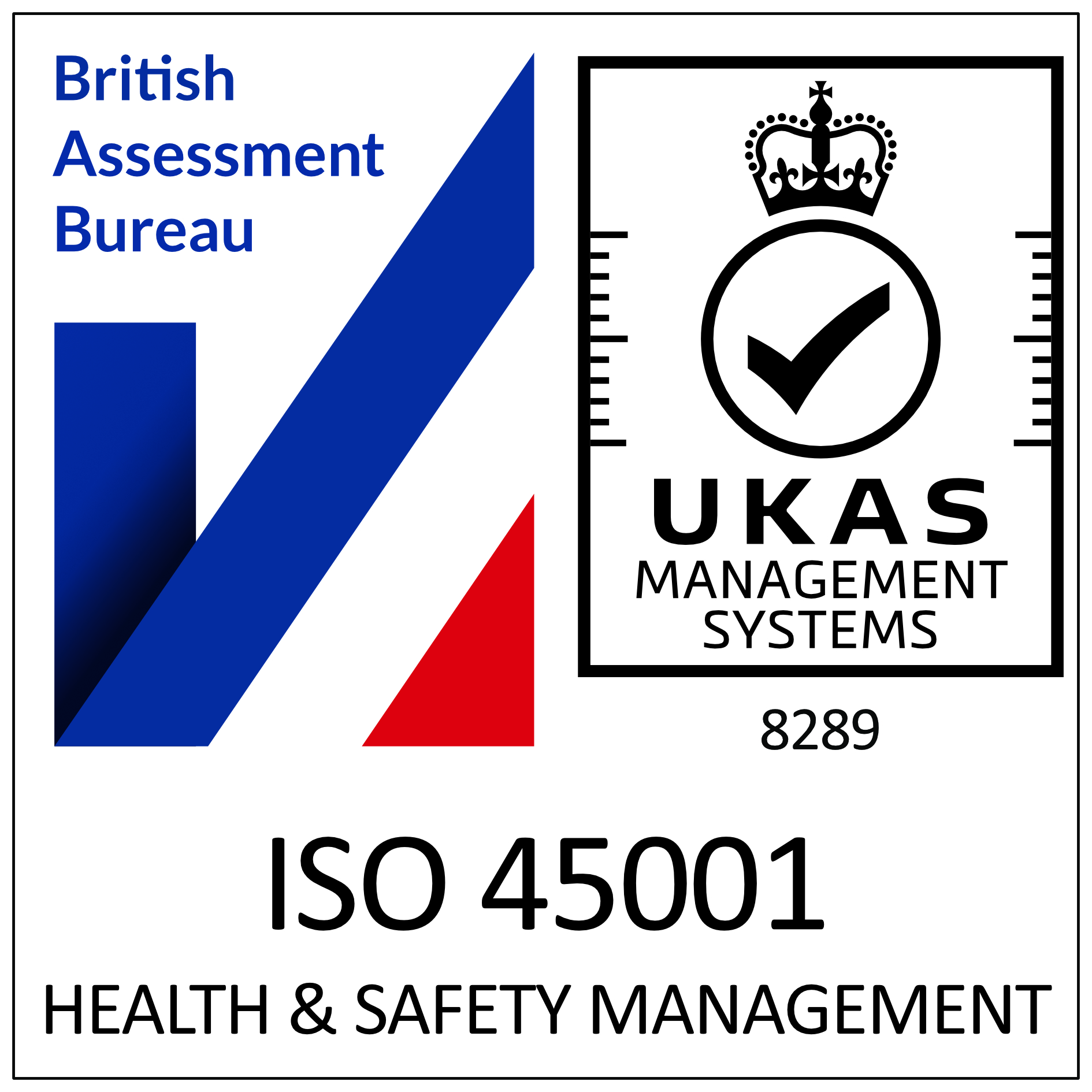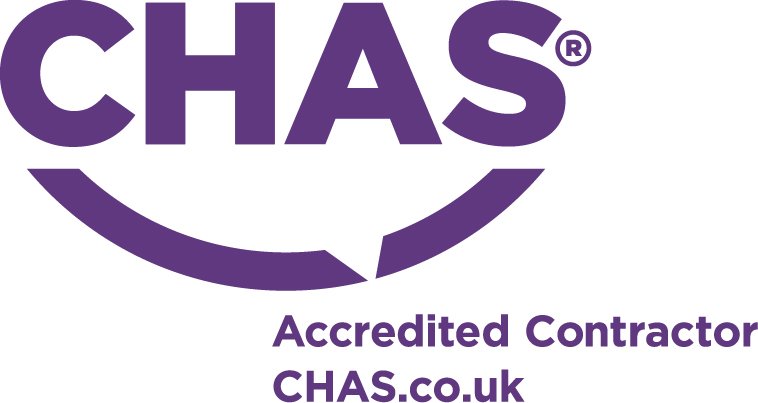Latest sewage & wastewater news
RA Dalton Ltd are the Klargester number one accredited installer covering the whole of the UK.
Oxygen – Your sewage treatment life source
Whilst not necessarily straight forward to implement the treatment of sewage by principle is quite simple, the processes that need to be undertaken in order to fulfil the required treatment are carefully designed by wastewater specialists.
Each project we undertake has an individually coordinated scope of works in order to achieve the effluent standard needed to meet the site’s environmental obligations, whether it be the General Binding Rules or an Environment agency permit.
The aim of sewage treatment is to revert the water back to the same as how it was received and support the ecosystem of the receiving environment.
The breakdown of sewage
Whilst many components make up what we consider ‘raw sewage’ the fundamentals are:
- Large solids
- Fine Solids (Suspended solids)
- Organic materials (Biochemical oxygen demand)
- Dissolved (Ammonia, Nitrate, Phosphate etc.)
Sewage treatment is about supporting the oxygen levels within the watercourse/ environment and lowering the levels of harmful contaminants. A number of elements are a by-product of sewage and need to be reduced to minimal levels in order to not have a detrimental effect on the ecology of the surrounding area.
The first stage of sewage treatment
In order for treatment to take place oxygen is a vital component, therefore the first stage is to settle the effluent. For package sewage treatment plants, they will usually be split into zones, the first stage is the primary zone/ primary settlement chamber. Larger scale projects may require the stages to be split into different tanks.
Tanks must be appropriately sized to give enough time for the large solids to settle, the majority of which will sink to the bottom of the tank. There will however be a crust that develops which will be on the surface level of the primary zone.
In order for efficient treatment to take place the primary tank will require desludging in full to ensure the large solids are removed, when any part of your treatment plant needs emptying this should always be done in full. To check if your system has been emptied properly, once the tanker has completed the empty if you check in the tank there should be no sludge in the base of the unit.
The tank will be relatively quick to return to a full working level, this will be dependent on how busy site is.
The biological treatment stage
Dependent on what sewage treatment plant you have installed will be dependent on the method in which the treatment takes place, there are three main types of electric sewage treatment plant. All of these systems have a different way in which they ensure oxygen is received in the treatment zone.
Rotating Biological Contactor (BioDisc)
The cover of these units is over the entire footprint of the tank as access to the whole unit is required for maintenance purposes. The rotating discs will have a forward feed bucket which transfers the settled effluent from Biozone 1 to zone 2.
From here the discs will rotate providing oxygen to the functional bacteria in order to break down the waste.
Recirculating filter
Air is fed into the tank by a blower, this directs the air to the bottom of the unit, this then directs the waterflow up through pipework to the distribution cone where the wastewater is distributed over the media bale/ Enka mat.
This is then recirculated to keep the treatment process renewing and to improve the overall effluent quality.
Submerged aerated filter (SAF)
Compressors send air to the bottom of the unit through diffuser pipework, this will then generate bubbles which are essential for the aeration of the system.
All of these overflow into a final settlement zone where the last of the solids will settle.
When to tell when your system isn’t working
You can generally identify if a treatment plant isn’t working efficiently by the smell and general appearance. An experienced service engineer will be able to identify an issue is present before carrying out a full electrical and mechanical service.
For example, a BioDisc that is working perfectly should be ‘odourless’, albeit many have described it as an earthy smell. Whereas if you smell an eggy smell this is a sign that immediate attention is required. The only time a treatment plant may smell if operating correctly is during the desludging process.
Visually the unit will also give indicators which can be identified due to the colour of the sludge in each zone, initially the sewage will be brown and phasing to a more gingery colour as the treatment processes takes place. In a BioDisc where treatment is not taking place bridging of the sludge between the discs will start to take place.
You may always start to see Sewage fungus appearing on the outlet, this only develops in areas with very low oxygen levels and therefore is an indicator that treatment hasn’t managed to take place.
The importance of oxygen in sewage treatment
The most vital part to any of these processes is ensuring that your system is appropriately aerated meaning the system needs to be maintained and emptied in line with the manufacturer’s guidelines as failure to do so can mean that the system does not get appropriate amounts of oxygen required for the “good” bacteria to treat the waste.
This is why having an appropriately designed sewage treatment plant is also important as if your unit is undersized the amount of oxygen the discs/ blowers will generate will only cover the anticipated daily quantity which is outlined under the British water flows and loads 4.
Entrust your wastewater needs to a company you can rely on and give us a call now on 01388 537030.

